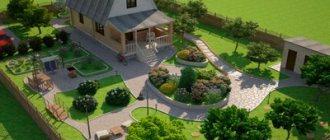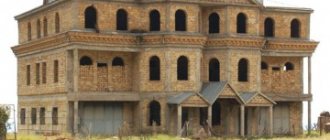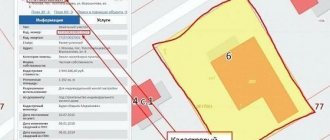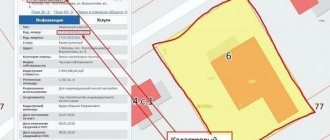We answer a question that worries land owners.
Petrov A.V. owns a plot of land on which a residential building (house) has already been erected, but he wanted to expand and build a cottage, and use the existing real estate as a place of temporary residence.
Another example is when the same Petrov decided to build a second house on the same plot, since there was not enough space in the first one for his family and parents to live.
There are many situations from practice when citizens wonder whether it is possible to build two houses on a plot. It happens when unauthorized buildings are erected that need to be legalized. In any case, it will not be possible to hide a residential property from the registration authorities, so we advise you to use only legal construction methods.
There is no direct ban on the construction of two houses on the same land
Looking into the legislation (Town Planning and Land Codes of the Russian Federation), we will not find any indication that more than one house cannot be built on one plot of land for the purposes of individual housing construction, SNT or private household plots.
However, at the level of regions, villages and districts, local authorities can establish specific rules for the use of land and construction. In short, such rules are called land use and development rules.
According to the PZZ, the maximum and minimum parameters of the land, the permissible percentage of plot (building density) for the construction of real estate, and the standards for setbacks from the boundaries of the site are established. At the local level, restrictions may be established regarding the permissibility of building two houses on one plot of land.
For example, the Leninsky Moscow District of the Moscow Region set the minimum plot size at 400 sq.m., and the urban settlement of Rodniki of the Ramensky Municipal District of the Moscow Region at 600 sq.m. Common to both regions is the maximum percentage of construction, which is 40%, and the minimum setback from the boundaries of the site is 3 m.
Note that the maximum building percentage (density) is calculated as the size of the house along the external walls relative to the land plot. More often the size varies from 20% to 100%.
For example, Ivanov owns a plot of 10 acres, where a house measuring 5 by 6 m was built, which is a house area of 30 sq.m. or 0.3 acres, and the percentage of development on the land is 5. If the property has from 6 to 12 acres, you should focus on 40% for the development of the site.
Two residential buildings on one site: where to start construction
- Contact the local administration and clarify the PZZ, which indicates a ban or permission to build a second house, the permitted location on the site and parameters for construction. The PZZ can also be found on the official websites of the administration of a particular district, for example, type into the search bar of your browser “approved master plans of the PZZ on the official website of the Saratov district administration (replace the region with your own), where the necessary information will open.
- Calculate the percentage of already constructed residential property, since if the permissible percentage is exceeded, the construction of a second house will be refused.
- According to Art. 51.1 of the Town Planning Code of the Russian Federation (GrK RF), send a notice of the start of work to the town planning committee through the MFC, the State Services portal or by mail. The notice contains information about the developer and the site, characteristics of the house and a site plan with two houses, which schematically depicts the planned second residential property. The plan is drawn up by the cadastral engineer of the design organization.
- Having received a positive answer, follow the rules (Grk of the Russian Federation) on the construction of residential buildings. For example, according to paragraph 39 of Art. 1, objects for individual housing construction should not exceed a height of 20 m and occupy more than three floors. If similar and other conditions (fire safety requirements, sanitary standards) are not met, the structure will be recognized as an unauthorized construction.
- Maintain a distance between houses on the site of six or more meters based on building materials, and at least three meters from the house to the boundaries of the land.
- Having completed construction, draw up a notice of completion of work and send it to local authorities no later than a month after the construction of the second residential building on the site. The form for drawing up the necessary notifications can be found in the Appendices to the Order of the Ministry of Construction and Housing and Communal Services of the Russian Federation dated September 19, 2018 No. 591/pr “On approval of notification forms required for the construction or reconstruction of a real estate property, an individual construction project or a garden house.”
- Assign an address to a new residential property (house) before state registration in Rosreestr. The building will have a number similar to the existing object, but with a letter (Moskovskaya St., 21 lit. A), a fraction (Moskovskaya St., 21/1) or a postscript (Moskovskaya St., 21, building 1). Assignment is carried out by local authorities (city department of architecture and urban planning in the local administration, property department) after submitting the appropriate application.
- Send documents for registration of a new residential property to Rosreestr.
Recently, the Federal Law of December 30, 2004 No. 214-FZ “On participation in shared-equity construction of apartment buildings and other real estate and on amendments to certain legislative acts of the Russian Federation” has been subject to significant changes.
Photo: www.transgeocom.ru
Thus, in connection with the adoption of the Federal Law of July 29, 2017 No. 218-FZ “On a public law company for the protection of the rights of citizens - participants in shared construction in the event of the insolvency (bankruptcy) of developers and on amendments to certain legislative acts of the Russian Federation”, which significant changes were made to Federal Law No. 214-FZ, the question of the possibility of constructing an apartment building on several adjacent land plots, as well as the possibility of constructing several apartment buildings on one land plot, became relevant.
However, professional developers still do not have clear answers to these questions.
On the possibility of building a multi-apartment residential building on several adjacent land plots
Regarding the possibility of building a multi-apartment residential building on several adjacent land plots, completely opposite positions have been expressed so far, including by the courts.
The possibility of such construction is supported by those who do not see in the current land and town planning legislation norms that directly prohibit or limit such construction (for example, the decision of the Third Arbitration Court of Appeal dated October 23, 2012 in case No. A33-4596/2012), opponents of such construction refer to the possible different legal regime of developed land plots (for example, resolution of the Arbitration Court of the Central District dated December 18, 2014 No. F10-4481/2014 in case A35-274/2014).
The position is also repeatedly expressed that such construction is inadmissible due to the need to comply, within the framework of Part 1 of Article 38 of the Urban Planning Code of the Russian Federation, with the maximum parameters established by the rules of land use and development of a settlement or urban district. The same conclusion follows from the letter of the Ministry of Economic Development of the Russian Federation dated October 10, 2011 No. A23-4229, which states that, in the opinion of the department, the possibility of crossing the boundaries of a building and the boundaries of the land plots on which the building (structure, structure) is located is not permitted by current legislation is allowed and, accordingly, one real estate object (area object) can be placed only on one land plot provided for construction, and not on several land plots, since when placing a building (structure, structure) on several adjacent land plots, the requirements of town planning regulations are violated norms and rules, as well as the principle of the unity of fate of land plots and objects firmly associated with them.
However, it is difficult to agree with such a conclusion, since the purpose of establishing minimum setbacks from the boundaries of land plots is the need to comply with the rights and legitimate interests of the rights holders of adjacent land plots, fire safety distances, insolation requirements and other similar requirements in relation to real estate located on adjacent land plots. When constructing one area facility on two or more adjacent land plots, these requirements are not applicable to these plots.
The Committee of the State Duma of the Russian Federation on Land Relations and Construction, and later the Committee of the State Duma of the Russian Federation on Transport and Construction, expressed the following opinion.
Based on Part 2 of Article 51 of the Town Planning Code of the Russian Federation (hereinafter referred to as the GRK RF), construction and reconstruction of capital construction projects are carried out on the basis of a construction permit, except for the cases provided for in this article.
Part 6 of Article 51 of the Civil Code of the Russian Federation establishes the competence of state authorities and local self-government bodies in the event of issuing permits for the construction of capital construction projects, the construction, reconstruction of which is planned on the territory of two or more municipalities, constituent entities of the Russian Federation. Considering that, according to paragraph 3 of Article 119 of the Land Code of the Russian Federation, the boundaries of land plots should not cross the boundaries of municipalities and (or) the boundaries of populated areas, this provision of the Code, in the opinion of the relevant State Duma Committee, already directly provides for the possibility of issuing a construction permit on several adjacent land plots.
In addition, according to the relevant Committee of the State Duma, it is necessary to take into account that in accordance with clause 26 of the Procedure for maintaining the Unified State Register of Real Estate (Appendix No. 1 to the order of the Ministry of Economic Development of the Russian Federation dated December 16, 2015 No. 943) to the basic information about the building, subject to entry into the real estate cadastre records is the cadastral number(s) of the land plot(s) within which the building(s) is located(s).
Based on the above, in the opinion of the Committee, the State Civil Code of the Russian Federation contains no restrictions on the design and construction of a capital construction project on several adjacent land plots. At the same time, the permitted use of all land plots must allow the placement of such an object.
In general, this position seems justified, however, the issue of constructing one large-scale facility on several land plots, in our opinion, remains debatable.
On the construction of several area objects on one plot of land
Regarding the construction of several area facilities on one plot of land, the following should be noted.
The Civil Code of the Russian Federation also does not provide for a ban on the construction of several area objects on one land plot. The only exception to this rule is established by part 31 of article 51 of the Civil Code of the Russian Federation.
In accordance with this norm, if a land plot located in state or municipal ownership is leased for the integrated development of the territory, the issuance of a permit for the construction of capital construction projects - apartment buildings within the boundaries of this territory - is allowed only after the formation of land plots from such land plot in accordance with the approved territory planning project and territory surveying project.
It seems that if such construction were prohibited, the rule specified in Part 31 of Article 51 of the Civil Code of the Russian Federation would be extended to all cases.
It should also be noted that the Federal Law of July 2, 2013 No. 142-FZ “On Amendments to Subsection 3 of Section I of Part One of the Civil Code of the Russian Federation” introduced into civil legislation the institution of a single real estate complex - an immovable thing participating in circulation as a single object .
In accordance with Article 1331 of the Civil Code of the Russian Federation, a single real estate complex is a set of buildings, structures and other things united by a single purpose, inextricably linked physically or technologically, including linear objects (railroads, power lines, pipelines and others), or located on one plot of land, if the unified state register of rights to real estate registers the ownership of the set of specified objects as a whole as one immovable thing.
Changes to the building permit form should also be taken into account. In accordance with Order of the Ministry of Construction of Russia dated February 19, 2015 No. 117/pr, the new form of construction permit provides for the possibility of indicating the characteristics of each capital construction project included in the property complex in accordance with the design documentation.
At the same time, the concepts of “single real estate complex” and “property complex” are not identical.
Civil legislation defines only one type of property complex as a “property complex” - an enterprise. Accordingly, an enterprise is characterized by the fact that it is used exclusively within the framework of entrepreneurial activity; its composition may include not only property, but also non-property rights.
A characteristic feature of a single real estate complex is its classification as indivisible things.
Considering the above, it seems indisputable that in cases where we are talking about a complex object, be it a “single real estate complex” or a “property complex”, the construction of several area capital construction projects on one land plot is quite possible.
However, the application of these rules to a group of apartment buildings is not always legal and not always possible.
Photo: www.vd-tv.ru
It is necessary to take into account that within the framework of urban planning relations, including during the construction of microdistricts, problems may arise in the implementation of these provisions, since within the framework of a single real estate complex the possibility of construction in stages is not directly provided for, including by issuing permits for the commissioning of individual houses (until the introduction of a single real estate complex as a whole). There is also no provision for registration of individual objects without simultaneous registration within a single real estate complex.
Part 6 of Article 16 of the Federal Law of December 29, 2004 No. 189-FZ “On the Enactment of the Housing Code of the Russian Federation” establishes the rule that the issuance of a permit for the commissioning of an apartment building and other real estate objects included in the apartment building , built or reconstructed after the date of entry into force of the Housing Code of the Russian Federation, is carried out only if information about the location of the boundaries of the land plot on which this apartment building is located, as well as other real estate objects included in this apartment building, is included in Unified State Register of Real Estate. At the same time, according to parts 1 and 5 of the same article, such a land plot from the moment of state cadastral registration becomes the common shared property of the owners of premises in an apartment building.
Due to these provisions, after the house is put into operation, subsequent construction on a common land plot of other objects provided for in the design documentation may entail additional risks of impossibility of completing construction.
These and other similar issues in practice create serious administrative obstacles in the case of the implementation of investment projects, including within the framework provided for by the legislation on urban planning activities of institutions for integrated and sustainable development of the territory (development of built-up areas, integrated development of the territory, including for the purpose of housing construction economic class, integrated development of the territory, etc.).
It seems that such a change will partly solve the problems that have arisen for developers.
Alexey TYo, Deputy Head of the Staff of the State Duma Committee on Transport and Construction
Kirill KHOLOPIK, General Director of the Institute for Development of the Construction Industry LLC Nikita FILIPOV, Head of the Moscow State Duma Bureau of Lawyers "De Jure"
Two residential buildings on an individual housing construction plot
The legislation establishes the rule for the construction of one residential building. The construction of other buildings is possible when they are not intended for housing (baths, sheds, garages) and are considered auxiliary facilities.
Please note that there is no direct indication for the construction of only one residential property on land for individual housing construction.
If two houses on an individual housing construction plot have already been built, the land is divided into two separate plots, on each of which there will be a residential building.
When dividing, they turn to a cadastral engineer, who, through land surveying, will establish the boundaries of the newly formed plots of land. Each of them is registered in Rosreestr, and the previous (single) one is removed from the cadastral register.
When dividing a plot for two houses, you must follow the rules regarding the intended purpose of the new plots, type of use, area, and the absence of restrictions on construction.
The owner becomes a taxpayer for two plots of land and pays membership fees when the land is divided in order to build houses on the SNT plot. Their size is set in proportion to the number of plots owned by the owner.
If you don’t want to “mess around” with the division, on lands for individual housing construction, you can build two houses on one plot without land surveying, if you assign the second real estate the status of a guest house or an auxiliary building, for example, a bathhouse with living rooms.
But it is worth remembering that such an object is not assigned an address and it cannot be sold without the main house.
It’s easier to register two residential buildings on the site and sleep peacefully.
To obtain a building permit, a request is submitted to the local administration, accompanied by an extract from the Unified State Register of Real Estate on the ownership of the site, a town planning plan, and a land diagram indicating the location for the planned second home.
Correlation of standards in relation to the placement of a building on several land plots
Evgeniy Igumenov
Expert
Publications: 23
08.10.2014
As a general rule, the construction of one building on several land plots is contrary to the Town Planning Code of the Russian Federation (hereinafter referred to as the RF Civil Code). The refusal to issue an urban planning plan for a land plot (GPZU) in this case is legal. Obtaining a GPZU in this case is possible only after the procedure for merging land plots in compliance with the requirements of the law.
Clause 7 of part 73 of section V of the order of the Ministry of Economic Development of the Russian Federation dated 02/04/2010 No. 42 “On approval of the Procedure for maintaining the state real estate cadastre” provides for a provision according to which general information about the building is entered into the Register, including the cadastral number of the land plot on which the building is located building. “If the building is located on several land plots, the cadastral numbers of all such land plots.”
It seems that the introduction of this norm is due to the need to include in the state real estate cadastre a block-building house (consisting of several autonomous blocks) and land plots (for each block) on which such a house is located.
There is a specificity of houses of blocked development, the construction of which is provided for by the Civil Code of the Russian Federation. A residential building of a blocked development is understood as “a residential building with no more than three floors, consisting of several blocks, the number of which does not exceed ten and each of which is intended for one family, has a common wall (common walls) without openings with the neighboring block or neighboring blocks, is located on a separate plot of land and has access to public territory...” (clause 2 of part 2 of article 49 of the Civil Code of the Russian Federation).
Thus, a residential building in a blocked development consists of several isolated blocks, each of which has access to an independent plot of land. The technology for constructing a residential building with a blocked development and registering each block in such a house for cadastral registration is carried out according to the following logical scheme.
1. Since several blocks of a blocked development house are structurally connected, the construction of a blocked development house is initially carried out on one plot of land, and therefore:
- one GPZU is issued per land plot;
- One building permit is issued for one house, consisting of several autonomous blocks.
2. Before obtaining permission to put the facility into operation, independent land plots are formed for each isolated block of a house in a blocked development by dividing the original land plot 2. A boundary plan is obtained for each land plot.
3. After receiving permission to put the facility into operation, 3 buildings and land plots for each isolated block are registered in the cadastral register, and each such block is an object of turnover.
Footnotes:
1. "V" Entering information about buildings into the Register...
73. The following general information about the building is entered into the Register:
7) cadastral number of the land plot on which the building is located. If the building is located on several land plots, the cadastral numbers of all such land plots;.”
2. “Land plots are formed during the division, merger, redistribution of land plots or allocation from land plots, as well as from lands in state or municipal ownership” (Part 1 of Article 11.2 of the Land Code of the Russian Federation).
3. For more details, see question 32 of the “Library of answers to questions about urban planning activities” (“Question about the legal logic of cadastral registration of one block as part of a block-building building”).
The full material is available on the website of the Institute of Urban Economics at the link: https://www.urbaneconomics.ru/news/?mat_id=1030
Regulation
Tweet
0
6049
town planning code town planning plan of a land plot land cadastral registration building permit
Other publications by the author:
09.07 The classifier of types of permitted use of land plots should not be used
19.05 Chain reaction of legislative errors regarding the regulation of urban planning activities
08.04 The question of legal reality and the creation of professional myths about the Town Planning Code of the Russian Federation
Similar publications on the topic:
Two separate houses on a plot: how to sell and buy
“Practice shows that despite the absence of a ban on the construction of two houses within the same plot, Rosreestr does not register ownership of a second residential property if the land is not divided into separate plots. Often houses are recognized as unauthorized constructions and demolished,” this statement was received from a real estate expert.
There are not as many people wishing to buy two houses on one plot as the owners would like. In such situations, the land is either divided or each house is sold separately. When purchasing one of two houses, the buyer must understand that he will only own 1/2 interest in the land title.
Not all buyers agree with such rules, which leads to difficulties in selling two houses on the same plot.
The Supreme Court recalled the principle of the unity of fate of the site and the property located on it
On March 12, the Supreme Court issued Ruling No. 309-ES19-23230 on a dispute regarding the recognition of one of the co-owners of premises in a building as having a share in the common ownership of the land plot underneath it.
The courts did not agree on the claims
In November 2013, entrepreneur Vladimir Sholichev purchased from DK LLC premises in the administrative building on a site that at the time of the transaction belonged to the seller. In 2014, the company divided the plot into two, registering ownership of each of them. Subsequently, it sold, under a purchase and sale agreement, the non-residential premises in the building and the areas underneath it to Profnastil LLC.
Subsequently, the entrepreneur filed a claim with the Arbitration Court of the Kurgan Region against these companies for recognition of his ownership right to a share of a land plot in the amount of 279/1000 in common ownership, in proportion to the total area of the premises owned by him, as well as the right to a share in common ownership of common premises use in this building, registered under Profnastil LLC.
The arbitration court terminated the proceedings in relation to the plaintiff’s demand for recognition of his right to a share of the plot in accordance with clause 2 of part 1 of Art. 150 of the Arbitration Procedure Code of the Russian Federation, taking into account the decision of the Kurgan City Court in case No. 2-50/16, which entered into force, which rejected the claim of the plaintiff to the defendants for recognition of the right of common shared ownership of the disputed plot. The arbitration court also refused to satisfy the plaintiff’s request to combine cases No. A34-215/2019 and No. A34-3107/2019 into a single proceeding.
Thus, the court of first instance considered that in the case before it there was already a judicial act that had entered into force, adopted on a dispute about the same subject and on the same grounds. Consequently, the plaintiff has already exercised his right to judicial protection in relation to the right of shared ownership of the plot where the building with non-residential premises belonging to him is located.
The appeal overturned the decision of the first instance, returning the case for review. At the same time, she agreed with the conclusions of the lower court about the identity of the participants in the cases, but considered the requirements in the case under consideration to be independent and different from those that were considered in the framework of the civil dispute.
The appellate court also noted that the plaintiff stated new demands that are not identical to those considered by the court of general jurisdiction, and his demand for recognition of the right to a share in the common ownership of the plot is the main one. Accordingly, without its consideration, the remaining claims arising from the main one cannot be resolved on their merits. The appeal also considered that consolidation of the cases into one proceeding would help ensure procedural economy and achieve legal certainty on all interrelated claims of the plaintiff as quickly as possible. Thus, the court concluded that the first instance had no grounds for terminating the proceedings in accordance with paragraph 2 of Part 1 of Art. 150 APK.
Subsequently, the district court overturned the appeal ruling, upholding the first instance ruling. The cassation considered that the plaintiff stated a similar requirement in relation to the same land plot, as well as for recognition of ownership in proportion to the total area of the premises in the disputed building, therefore, indicating a specific proportion in this case does not change the subject of the demand.
Disagreeing with this decision, the entrepreneur appealed to the Supreme Court. In the cassation appeal, he asked to cancel the judicial acts of the first and cassation instances and to uphold the appeal decision.
The Supreme Court supported the arguments of the appellate court
Having studied the materials of case No. A34-215/2019, the Judicial Collegium for Economic Disputes of the Supreme Court recalled that the court terminates the proceedings in accordance with paragraph 2 of Part 1 of Art. 150 of the Arbitration Procedure Code, if it establishes the existence of an act of an arbitration court, a court of general jurisdiction or a competent court of a foreign state that has entered into force in a dispute between the same persons, on the same subject and on the same grounds, except in cases where the arbitration court has refused to recognize and enforcement of a foreign court decision.
The Supreme Court explained that in the case under consideration, the entrepreneur stated his demands for the first time; they were not the subject of consideration by another court, and therefore are independent. As the Court noted, from the operative part of the decision of the court of general jurisdiction it follows that the case was considered on the merits and the court refused to satisfy the following demands: to terminate the registered ownership of the defendants to the disputed plot; on the invalidation of contracts for the sale and purchase of plots concluded by the defendants; on recognition of the right of common shared ownership of all owners of premises in the building.
“At the same time, as the entrepreneur reasonably points out, the grounds for the emergence of his right to a share in the ownership of a land plot <...> by force of law from the moment of state registration of the transfer to him of ownership of the premises in the building in accordance with the provisions of Art. 131, paragraph 2 of Art. 223, paragraph 4 of Art. 244, paragraph 2 of Art. 552 of the Civil Code of the Russian Federation, to which he referred when considering this case, the court did not examine. The court of general jurisdiction examined the claims aimed at challenging the transfer of the right to a land plot to the Profnastil company in order to establish a regime of common shared ownership,” the definition notes.
Thus, the Supreme Court considered that the entrepreneur’s demand for recognition of his ownership of the share was stated for the first time and is not similar to the demand considered in another case. The Supreme Court added that the fact that the plaintiff acquired ownership of the premises in the building preceded the purchase and sale transactions of the disputed plots, which violates the principle of the unity of fate of the plot and the real estate located on it.
“At the same time, as the entrepreneur rightfully points out, no other method aimed at restoring his violated rights to the land plot is seen; the applicant, in accordance with the circumstances established in the case and the essence of the violation of his rights, chose the appropriate method of protecting them,” the Supreme Court noted.
As a result, the Supreme Court overturned the judicial acts of the first and cassation instances, leaving the appeal decision in force.
Experts commented on the findings of the Supreme Court
According to Takhmina Arabova, partner of Bartolius Law Firm, the Supreme Court consistently protects the principle of the unity of fate of the land plot and the building located on it, one of the manifestations of which is the right of common shared ownership of the plot belonging to the owners of the premises in this building.
“In this case, it is noteworthy that, in defending this principle, the Supreme Court is ready to take a broad look at the identity of claims and use the slightest difference in them, if this can help to connect one person’s title to land and ownership of a building (premises),” noted she is in the comment “AG”.
Senior lawyer, Real Estate practice. Earth. Construction” of the VEGAS LEX law firm, Marina Preobrazhenskaya believes that in the case under consideration, the highest court indirectly raised the question of whether the buyer of the premises in the building had a right of ownership to the land, since as part of the dispute the claim of the owner of the premises against the seller of real estate and the owner of the plot was considered, who was also the buyer of other premises in this building.
The expert explained that in judicial practice, disputes have repeatedly arisen about whether the acquisition of ownership rights to non-residential premises located in a building entails the emergence of ownership rights to a share of a land plot. Before March 1, 2015, she added, there was no unified approach to addressing this issue. Despite the absence in the law of direct regulation of the transfer of ownership of the plot to the buyer of premises in the building, based on the totality of legal norms (clause 2 of article 555 of the Civil Code of the Russian Federation, clause 4 of article 35 of the Land Code of the Russian Federation as amended, valid until March 1, 2015 .), the courts predominantly satisfied the claims of premises owners for recognition of ownership of a share in the right to a plot necessary for the use of the property.
This legal position of the courts, Marina Preobrazhenskaya believes, was formed largely thanks to the explanations of the Supreme Arbitration Court of the Russian Federation (see, for example, paragraph 17 of the Information Letter of the Supreme Arbitration Court of January 28, 2005 No. 90, paragraph 25 of the Resolution of the Plenum of the Supreme Arbitration Court of November 17, 2011 . No. 73), which partially addressed the issues of the unity of fate of land plots and the objects located on them in relation to premises. However, due to the absence of a direct instruction from the highest court to resolve this issue in favor of the owners of the premises, some courts disagreed with the opinion that the purchaser of the premises acquired the right of ownership to a share of the plot.
The expert added that from March 1, 2015, paragraph 4 of Art. 35 of the Land Code was supplemented with paragraph. 7, according to which the alienation by a participant in shared ownership of a share in the right to a building, structure or alienation by the owner of a part of a building, structure or premises belonging to him is carried out together with the alienation of a share in the right of ownership of the land plot where these objects are located. “Thus, transactions for the alienation of premises without alienation of a share in the ownership of the corresponding plot, concluded from the specified date, are contrary to the law. Moreover, the Supreme Court, in Ruling No. 49-KG18-26 dated August 14, 2021, indicated the transfer to the buyer of the premises of a share in the right to the plot on which this property is located, even if the premises were purchased before March 1, 2015. Despite this that the dispute was not resolved on the merits by the ruling in question, the Supreme Court made an important conclusion for the plaintiff about the violation of the principle of unity of the land plot and the real estate located on it (premises owned by the entrepreneur),” concluded Marina Preobrazhenskaya.
In her opinion, this circumstance, in conjunction with paragraph 4 of Art. 35 of the Land Code and examples from law enforcement practice will allow the plaintiff in the dispute under consideration to defend the right to a share of the site necessary for the operation of the premises of which he is the owner. “In order to protect the interests - first of all, of the buyers of premises - as well as to avoid disputes between the parties to transactions when selling premises in a building, it is advisable to determine the issue of transferring to the buyer a specific share in the right to a land plot directly in the real estate purchase and sale agreement,” - The lawyer recommended in conclusion.
The Cadastral Chamber told how to divide a residential building into two owners
The Federal Cadastral Chamber for the Chelyabinsk Region continues the “This is useful to know” section. The institution often receives requests from citizens regarding the issue of dividing a house into two owners. Explanations on this issue were prepared by Olga Alekseeva, an expert at the Federal Cadastral Chamber for the Chelyabinsk Region.
What methods of dividing a residential building exist?
According to the provisions of the law, an individual residential building is a separate residential building with no more than three floors, intended for one family. Due to various life circumstances, people need to share a residential building. For example, when dividing property between spouses or when several people inherit a residential building, or if several families living in the same house want to manage the household only with the families they created. We offer two methods for dividing a residential building, which will allow the division of property to be carried out in accordance with the requirements of the law.
I. Conduct reconstruction of a residential building, as a result of which an individual residential building will become a blocked residential building
What is a blocked house?
Blocked houses consist of blocks that have common walls without openings with neighboring blocks and are intended for single-family residence. Ownership is registered for each block.
How to register changes made to the house?
It is necessary to register the blocks that are part of the blocked house. All units in the house are registered simultaneously. State registration of blocks is carried out upon receipt by the rights registration authority of the corresponding application and technical plan prepared by a cadastral engineer.
What happens to the land if you decide to make a block house?
Each block of a blocked house must be located on a separate plot of land, therefore, simultaneously with the documents for registering the blocks, it is necessary to submit documents for the division of the land plot to the registration authority. Registration of land plots is carried out on the basis of an application and a boundary plan.
When dividing a land plot, we recommend paying special attention to the size of the new land plots. To check the possibility of creating plots of a certain size, you can use the land use and development rules approved by the local government for the corresponding territory.
II. Carry out reconstruction of a residential building, as a result of which the residential building will become an apartment building
What is an apartment building?
An apartment building differs from a residential building in that residential or non-residential premises can be registered in an apartment building. Registration of premises in a residential building is not permitted by law.
The ownership rights of those sharing the residential building will be registered for the apartments. In addition, the common shared ownership of the owners will include common areas in the house, as well as a land plot.
How to register changes made to the house?
To register apartments, you will need two technical plans prepared by a cadastral engineer: the first - for registering changes made in the house, the second - for registering apartments.
What happens to the land plot if, as a result of reconstruction, the building becomes an apartment building?
Each land plot must be used in accordance with its type of permitted use. If the type of permitted use of the plot on which the residential building is located provides for the construction and placement of an individual residential building on it, it will be necessary to change the type of permitted use of the land plot to a type that allows the placement of an apartment building. Before starting the reconstruction of the house, we recommend checking that such a change is possible in accordance with the rules of land use and development.
Let us remind you that employees of the Cadastral Chamber in the Chelyabinsk region provide individual consultations on issues in the field of real estate turnover. You can find out detailed information about the procedure for providing services by calling (ext. 4365).
Someone else's roof at the dacha
If you look at judicial statistics in recent years, you can see that such disputes between neighbors occur very often. Therefore, an explanation of the rules of law in force in such “neighborhood” conflicts may be important.
Our story began with a citizen's claim. The plaintiff demanded that the neighbors be obliged to voluntarily demolish what they had built on their property. According to the lawsuit, the plaintiff’s family of neighbors erected a fence between the plots at a distance of 25 centimeters from his house, and built a barn and utility block “in close proximity” to his house.
Disputes about buildings that in some way interfere with neighbors in their summer cottages may end with the court suggesting that they be rebuilt or even demolished
This arrangement of buildings, the plaintiff stated in court, violates his rights. In winter, the snow that accumulates on the roof of the barn and outbuilding slides towards his house and plot, which creates “a threat to the life and health of people, causing damage to property, and also poses a threat to fire safety.” Even the fence annoys the neighbor. The fence, according to the lawsuit, “causes snow to accumulate between the fence and the wall of the residential building.”
By decision of the Ufa District Court, the disgruntled neighbor’s claim was denied. Moreover, by decision of the district court, the court recovered 15 thousand rubles from the plaintiff in favor of the company that carried out the examination. He tried to challenge the refusal decision in the Supreme Court of the Republic of Bashkortostan. And again unsuccessfully. The appeal not only upheld the decision of the court of first instance, but also recovered 25 thousand rubles from the plaintiff - the cost of the examination at the cadastral center.
After the losses, the citizen went to the Supreme Court of the Russian Federation and asked to cancel all the refusal decisions.
The high authority checked the case materials. According to the Judicial Collegium for Civil Cases of the Supreme Court of the Russian Federation, violations were committed during the consideration of this dispute.
Judging by the case materials, the two neighboring plots at issue in this case are almost identical. On the defendant's property, a fence made of profiled sheets, a wooden shed and a metal utility block were erected.
Local courts, when considering this case, used the Civil Code (Articles 209, 263) and the Land Code (Article 40). Both courts, refusing the plaintiff’s demands, proceeded from the fact that the disputed buildings were erected on the neighbors’ land “in compliance with the requirements for the intended purpose of the land plot.” According to the Bashkir judges, when the plaintiff demanded the demolition of the constructed objects, he “did not justify the necessity and proportionality of protecting his right solely through the demolition of the buildings erected by the defendants.”
Local courts also referred to the conclusion of the construction and technical examination and stated that “there are options for a technical solution to eliminate the identified violations that are not related to the demolition of the utility block.” According to experts, it was possible to make a fire wall between the plaintiff’s house and the utility block, and it was possible to change the roof structure of the utility block from gable to single-pitch so that snow would fall and rain would pour on the defendants’ side.
But having listed all this, the Supreme Court of the Russian Federation was surprised; local courts nevertheless concluded that the operation of the utility block “poses a threat to the life and health of citizens,” since the roof of the utility block is gable and during the season of heavy rainfall water can pour from the roof and snow falling. Precipitation may wet the wall of the plaintiff's residential building. Well, this could “result in” structural damage. Finally, if a fire occurs, the fire can easily spread to neighboring buildings.
The Supreme Court of the Russian Federation stated that it could not agree with the appeal ruling and explained on what grounds.
The court began with Article 304 of the Civil Code of the Russian Federation. It says that the owner can demand the elimination of any violations of his rights, “even if these violations were not associated with deprivation of possession.”
Having established during the consideration of the case which rights of the plaintiff the defendants erected a barn, a fence and a utility block were violated, the local court did not essentially resolve the dispute between the neighbors. The Bashkir court, on the one hand, refused to demolish the controversial buildings to the citizen, but on the other hand, did not make a decision on what actions the defendants must take in order to restore the violated rights of the plaintiff.
Such a decision by local courts left many questions. The court, having studied all the materials, listened to the parties and ordered examinations, did not resolve the conflict situation between the neighbors. It turned out to be a strange thing - the court forbade the destruction of the barn, fence and outbuildings of the neighbors, which the plaintiff asked for, but recognized that these buildings “threaten the health and safety” of the plaintiff. How the defendants should understand and, most importantly, implement this decision remains a mystery. Therefore, the Supreme Court of the Russian Federation overturned the appeal decision and sent the case for a new trial. But if the local courts agree to the claim, the defendants will lose a lot of money spent on erecting buildings on their site.








